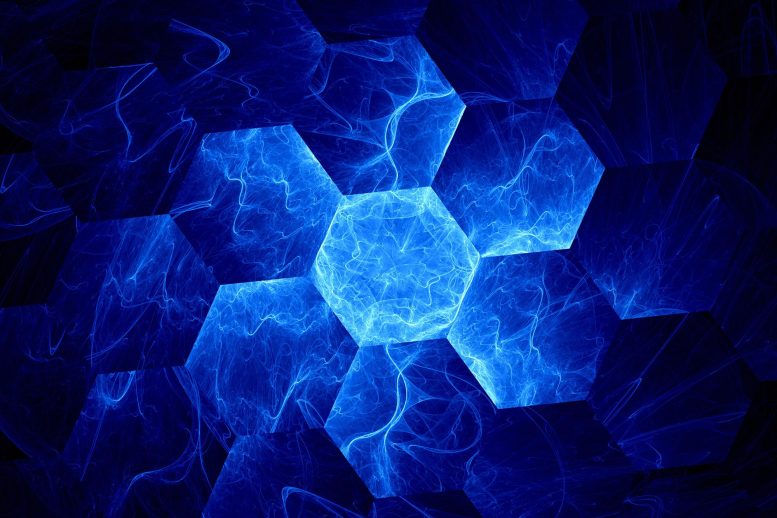
By RIKEN September 10, 2024
Collected at: https://scitechdaily.com/graphene-twisted-with-magnetism-unlocks-exotic-quantum-realms/
Adding an alternating magnetic field to two layers of graphene twisted at an angle can give rise to exotic electronic phenomena.
Physicists at RIKEN have demonstrated that magnetic fields can manipulate the electronic properties of twisted bilayer graphene, introducing new ‘magic’ angles and creating quadruply degenerate flat bands. These advancements suggest potential for discovering more materials with exotic electronic phenomena, expanding the scope of condensed matter physics.
Harnessing Magnetic Fields in Graphene Research
Magnetic fields can engineer flat bands in twisted graphene layersto create a new playground for exotic physics, RIKEN physicists have shown.
The exotic properties of graphene—a single layer of carbon atoms in a hexagonal lattice—are now well established. Electrons effectively move through graphene as if they have no mass. This is an exciting prospect for creating electronic devices with functionalities beyond those of silicon.
Exploring the Moiré Pattern in Twisted Graphene
Things get even weirder when two or more layers of graphene are combined.
Whenever two sheets with a repeating pattern are placed on top of each other, a much larger patternemerges when one sheet is rotated. Two layers of graphene also exhibit this so-called moiré pattern.
This leads to a dramatic change in properties. For example, at specific twisted angles, by adjusting electron number, the bilayer graphene can exhibit behaviors of a correlated insulator as well as superconductivity.

Unlocking New Physics With Spatially Varying Magnetic Fields
Now, Ching-Kai Chiu and Congcong Le, both at the RIKEN Interdisciplinary Theoretical and Mathematical Sciences (iTHEMS), and co-workers have shown that twisted bilayer graphene can become an even richer playground for exotic physics by using a spatially varying magnetic field.
Graphene’s unique band structure gives rise to its special electronic properties. “Graphene is renowned for having a band structure with a linear relationship between an electron’s energy and momentum at certain points,” explains Chiu.
Having two layers of graphene twisted at an angle alters these bands. “In twisted bilayer graphene, at certain ‘magic’ twist angles these bands evolve into flat bands because the interlayer coupling between the layers is adjusted to the right spot,” says Chiu.
Advancing Electron Interaction Studies
In these flat bands, the kinetic energy of electrons is minimized, so the interactions between electrons become the dominant force. Intense electron–electron interactions lead to numerous strongly correlated electronic phenomena such as unconventional superconductivity.
“The discovery of strongly correlated electrons in magic-angle twisted bilayer graphene devices has both shocked and excited the physics community,” notes Le.
These flat bands are two-fold degenerate: that is, two different quantum states have the same energy. Chiu and the team have now mathematically shown that introducing a spatially alternating magnetic field gives rise to additional magic angles and flat bands that are quadruply (four-fold) degenerate.
“This higher degeneracy could potentially lead to even more correlated phenomena,” says Le. “And the magnetic phase offers an additional novel degree of freedom to tailor the electronic band structure.”
The search is on to find other materials that exhibit these phenomena. “We will systematically search for new platforms that host flat bands,” says Chiu.
Reference: “Double and Quadruple Flat Bands Tuned by Alternative Magnetic Fluxes in Twisted Bilayer Graphene” by Congcong Le, Qiang Zhang, Fan Cui, Xianxin Wu and Ching-Kai Chiu, 13 June 2024, Physical Review Letters.
DOI: 10.1103/PhysRevLett.132.246401

Leave a Reply